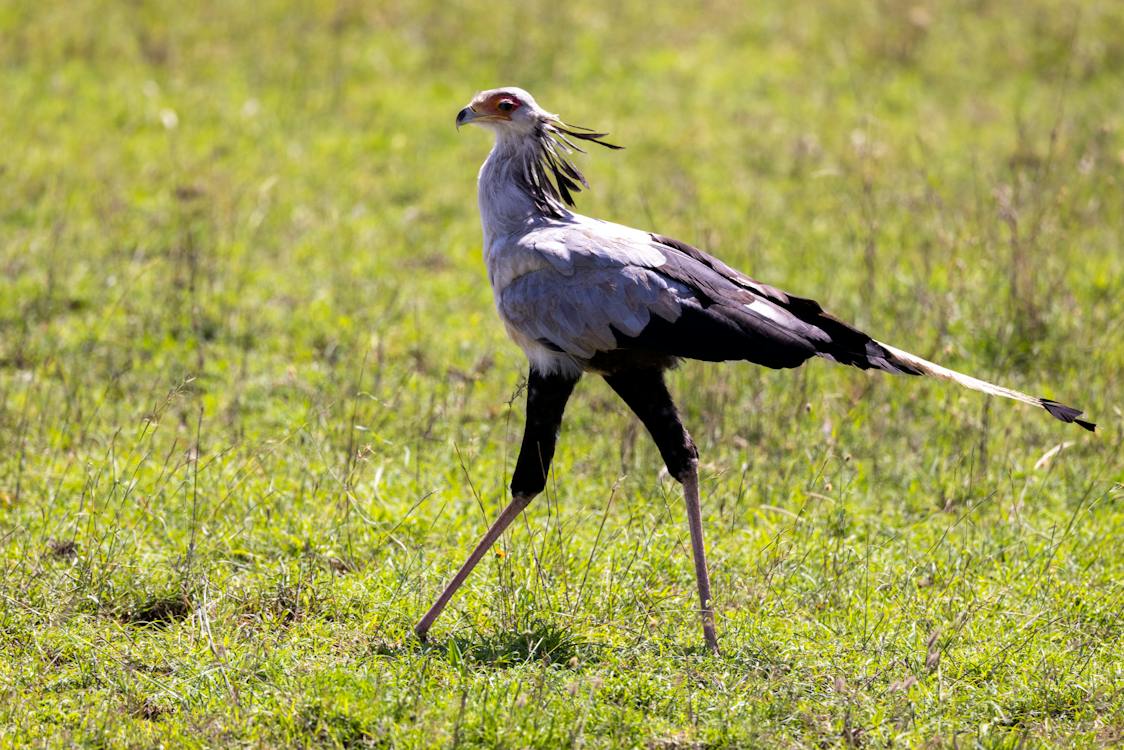The African continent is truly blessed with a wonderful variety of wildlife. This is also why Africa is deemed to be the home of the safari, mainly because it offers wildlife adventures and great ways to learn about the local flora and fauna.
There are numerous animals to be admired throughout the continent, including the Secretary Bird. It’s extraordinary it has a body that resembles that of an eagle and legs that look like that of a crane. Learn more about this bird by reading below.
What is the Secretary Bird?
The Secretary bird (sometimes spelled Secretarybird) is a huge bird of prey. With its binomial name Sagittarius serpentarius, this bird is endemic to the African continent, and its species was first described by John Frederick Miller in 1779.
A Dutch naturalist named Arnout Vosmaer suggested that the species was named “Sagittarius” by Dutch settlers because its gait resembles that of an archer’s. On the other hand, a University of the Free State professor named Ian Glenn claims that Vosmaer’s “Sagittarius” was just a misheard or mis-transcribed format of “Secretarius.”
The Secretary Bird is a member of the Accipitriformes order of birds that includes birds of prey such as hawks and vultures, but it falls under its own family named Sagittariidae.
What do they look like?
This bird is easily recognizable due to its shape, size, and colors. It resembles the body of an eagle and the legs of a crane, thus giving it an average height of 1.3 m or 4 ft 3 in. Its head is a featherless red-orange in color with pale brown irises. Most of its plumage is color grey, with hints of black in its thighs and primaries. Its majestic, black crest is made of an average of 20 long feathers.
The top part of its legs are covered in black feathers, while the lower legs are bare and pinkish-grey in color. Likewise, its lower legs are covered with scales to protect them while walking and from snakes. The Secretary Bird’s toes are short and blunt but geared with a very strong talon at the rear. They also have 2 elongated feathers that stretch outward from their tail, which extend to their toes when in flight.
Both male and female Secretary birds are similar in appearance, although the former tends to possess longer tail feathers, more head plumes, and a shorter head.
Where do they live and thrive?
Secretary birds are mainly found in wide grass plains and steppes, as well as bush-dotted savannahs and open spaces between trees. They thrive in the African continent and the southern part of Sahara. Its species is facing a rapid decline; therefore, the International Union for Conservation of Nature classified its species as vulnerable.
They live in places where the grass is scarce because it gives them the advantage to see their prey clearly. They avoid grassy and dense forests because this habitat restricts their movement.
Secretary Birds build huge nests in thorn trees or Acacia trees. They can breed at any period of the year but is more frequent during the late dry season. One nest can reach 8 feet in diameter. A female Secretary Bird lays 2 to 3 greenish-white eggs. For 3 to 4 months, the adult birds feed their juveniles through small mammals, insects, and water. By the time they reach 8 weeks old, young Secretary Birds can already take flight.
Fun facts you should know about the Secretary Bird
The Secretary Bird is famous for its method of killing snakes that wander the African grasslands. They hunt in groups or in pairs, and they can travel for over 30 kilometers a day just to search for snakes like Adders and Cobras. Using its long, strong legs and talons, it stamps on a snake and kills it by grabbing its prey and beating it to death. Sometimes, a Secretary Bird tosses a prey into the air to stunt it.
In addition, they also feed on lizards, grasshoppers, young hares, bird eggs, rodents, and small amphibians. Some are devoured whole, while a bigger prey is beaten to death before Secretary Birds eat it.
Secretary Birds are highly territorial, occupying areas of 40-50 square kilometers. It spends the majority of its time on the land. However, they are also deemed as good fliers. They utilize thermal currents to soar and go long distances. When a Secretary Bird is threatened, it spreads its wings and then runs away, but will fly strongly at the threat if it is highly dangerous.
SOUTHERN AFRICA BIRD LIST A – Z
BOTSWANA BIRDS | SOUTH AFRICA BIRDS
NAMIBIA BIRDS | ZAMBIA BIRDS | ZIMBABWE BIRDS
